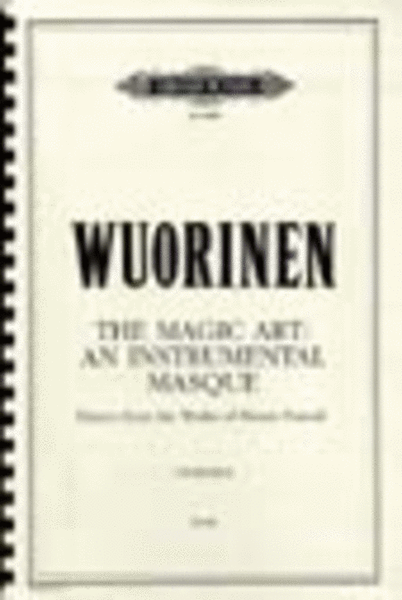The Magic Art: An Instrumental Masque drawn from the works of Henry Purcell
1979
Details
Description
SKU: PE.EP66809
1979. Composed by Charles Wuorinen. Contemporary Medium Ensemble. Modern. Full Score. Composed 1979. Duration 01:20:00. Edition Peters #EP66809. Published by Edition Peters (PE.EP66809).ISBN 9790300730172.
"HENRY PURCELL, master of elegance and bold harmony, has long been one of my special loves. Several times before in my composing career I have made use of old music (mostly from the Renaissance) in transcriptions and re-arrangements; and when a full evening's work for the St. Paul Chamber Orchestra began to shape itself in my mind, the idea of basing it on works of Purcell seemed a delightful prospect. He is not by any means an obscure figure. But this Mozart of the seventeenth century is, I think, known mainly through only a few works, and the enormous riches of much of his output lie waiting still for most people to discover. Purcell, although many of his works are quite long, almost never writes a really long single movement; indeed, many of his most stunning efforts are scarcely a minute in length. He is truly the master of small forms. So I have tried, by the way I have chosen the music I use, and above all by the order in which I represent its constituents, to make him the master of large form, too. I have taken works and parts of works from every genre of Purcell's output, arranged, transcribed, added parts, provided transitions, introductions, intercut one work with another, interrupted one piece with another, thus creating a single evening's work, of which each 'Act' is a complete drama.
But what about the words to this drama, since Purcell is such a master of setting English? Here I had a hard decision to make, since one of my chief delights in Purcell is his setting of text. But this was, after all, an instrumental commission, and it would have been impossible and meaningless to gather a rag4ag of singers for these fragments of vocal works I used. THE MAGIC ART, therefore, has become an essentially instrumental drama, but I think of the instruments personified, as if they were on a theatrical rather than musical stage. And I confess that - rare for me - I have a programmatic notion in the back of my mind. It is reflected in the title of the work, and the titles of the several 'scenes'." - CW

 Share
Share